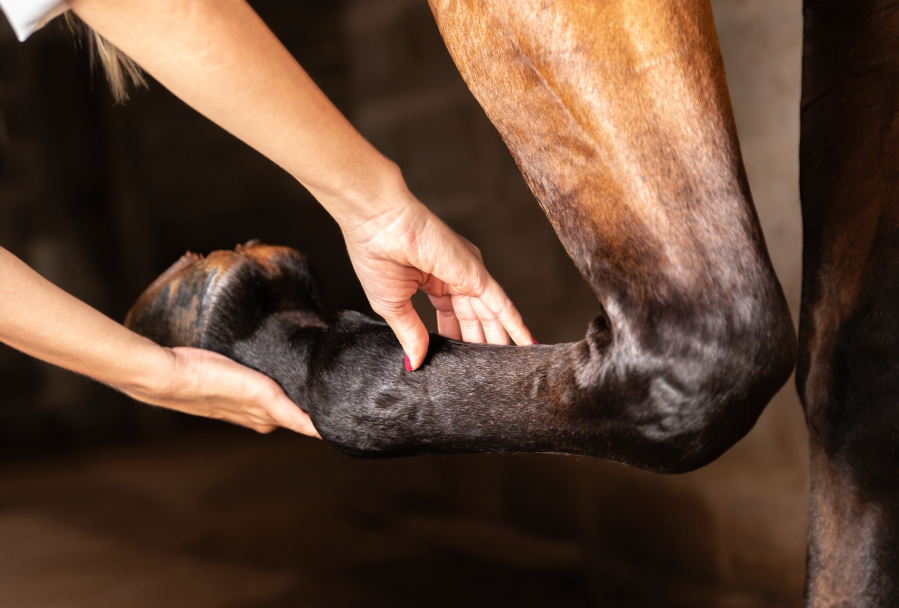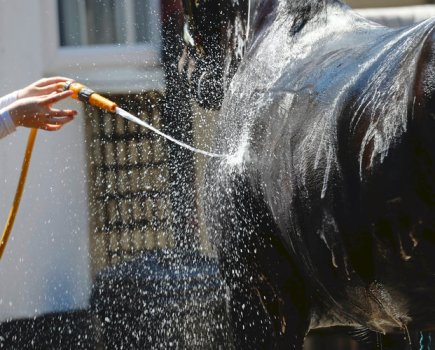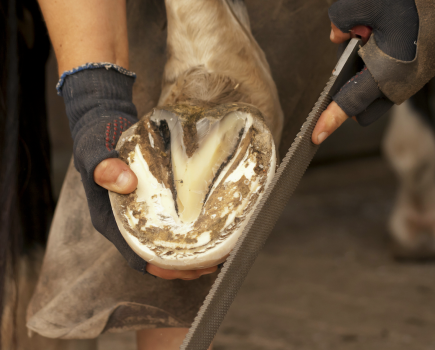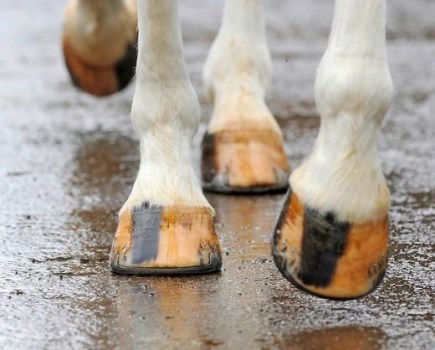Have you ever brought your horse in from the field or entered their stable and discovered that they have a swollen leg? Noticing that your horse has a swollen limb (or sometimes more than one) is something that most owners have experienced at one point or another.
Some swellings are innocuous, while others are potentially a sign of something serious — so either way it can be a worrying time for horse owners and riders and it’s important to know how to deal with a swollen leg. Vet Kyle Tindall-Read MRCVS shares the first steps you should take when you discover that your horse has a swollen limb — or several — and what it could mean.
How to assess a swollen leg
If you notice that your horse has swelling in a limb, the first thing to do is assess it to decide whether it requires veterinary attention by doing the following:
- Firstly, check the swelling by slowly running your hands over the swollen area to feel for any heat and gently palpate the region to identify any tenderness.
- If your horse flinches in response to your touch or his skin feels warmer in these areas compared to elsewhere on his legs, he may be experiencing an acute inflammatory reaction.
- If neither heat nor pain accompanies your horse’s swelling, he probably has a non-acute condition, such as windgalls or filled legs.
- An acute swelling that’s warm and tender to the touch suggests a recent injury or a developing infection.
- With infection, the area may feel hot and be painful to touch, so it’s worth checking your horse’s temperature and look carefully for any wounds such as small puncture wounds or any cuts that are oozing.
- An acute or new swelling, especially if accompanied by heat and in just one leg or that is affecting a joint, is a reason to call your vet, as is swelling associated with lameness.
Types of swelling
Cellulitis
Cellulitis, also called septic cellulitis, is a bacterial infection of the deeper layers of the skin. It can occur anywhere on the body, but in horses the infection commonly occurs in one of the hind legs. Cellulitis typically starts with sudden swelling that is warm and painful to the touch. Veterinary attention is required.
Lymphangitis
Lymphangitis is inflammation of the lymph vessels most usually in the limbs and typically appears as a hot, painful, extremely swollen limb, usually the hind leg. Severe lymphangitis can be difficult to treat and requires veterinary attention.
Oedema
Oedema is an accumulation of lymphatic fluid under the skin that has settled to the lowest point of the body. They are usually painless and will disappear with increased circulation of the lymphatic system.
Tendon, ligament and joint injuries
Sprains and strains involving tendons, ligaments or a joint capsule will often produce inflammation, pain, swelling and lameness, and require immediate veterinary attention.
Windgalls
These are residual inflammations from old tendon and ligament injuries. They usually occur on the back of the leg, at or just above fetlock level. Windgalls normally occur on both hind legs, although they occasionally appear on just one leg and sometimes can also be found in the front legs. They are usually painless and will often disappear during exercise and movement.
Abscesses
Foot abscesses are associated with sudden onset severe lameness and often cause legs to fill due to the inflammatory processes occurring in the foot. Your vet and/or farrier should be called out to locate and release the infection from the abscess, after which the foot should be poulticed to draw out any remaining infection.
Filled legs
Filled legs is the term used to describe a condition in which the length of a horse’s leg (more commonly the hind pair) appear swollen. It’s often the result of the horse standing in his stable for longer than normal and not doing enough exercise. Once the horse has started moving, the swelling often dissipates.
Degenerative joint disease
Degenerative joint disease (DJD) is the most common type of arthritis in horses. It is a chronic disease in which the cartilage on the ends of bones wears down, resulting in loss of joint mobility, swelling, heat and pain.
Arthritis
Arthritis is very common in horses, especially in the ageing population. It is a degenerative joint disease that causes pain and inflammation. Over time, the inflammation damages the cartilage within a joint beyond repair, leading to chronic pain.
Meet the vet: Kyle Tindall-Read BVSc MRCVS has worked for Durham Equine Practice since 2017. He qualified at the University of Liverpool and completed an externship at Rossdales Equine Hospital in Newmarket and twice worked as a steward for the British Equine Veterinary Association Conference. He is interested in all aspects of first opinion equine practice.
How to prevent swollen legs
There are several things that you, as a horse owner/rider, can do as part of your everyday management to help prevent your horse suffering with a warm or swollen leg. Find out what action you can take here.









